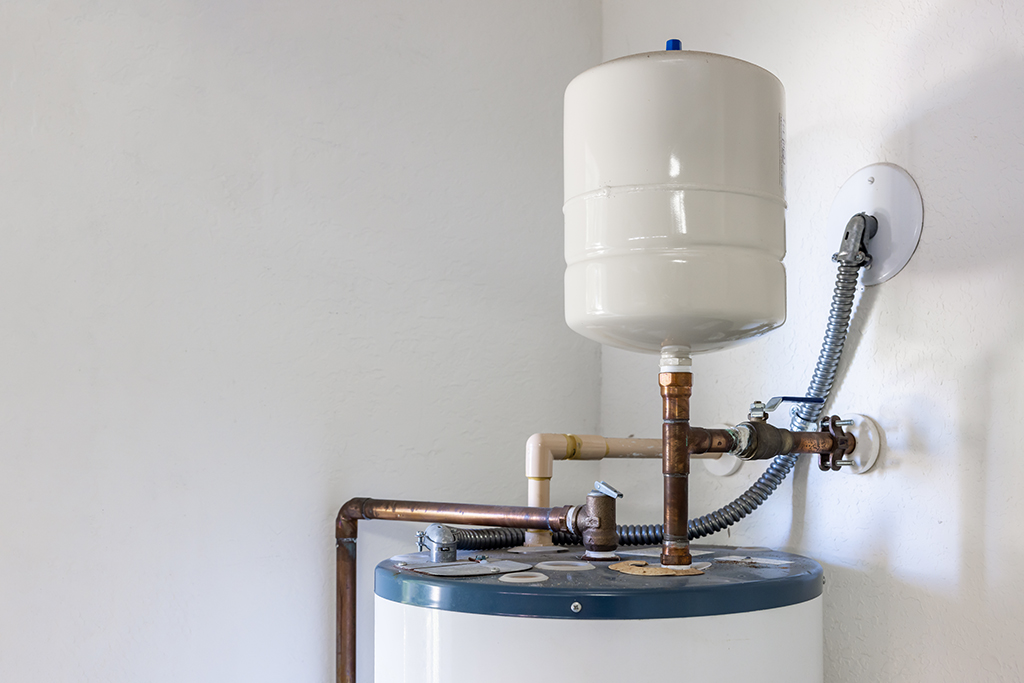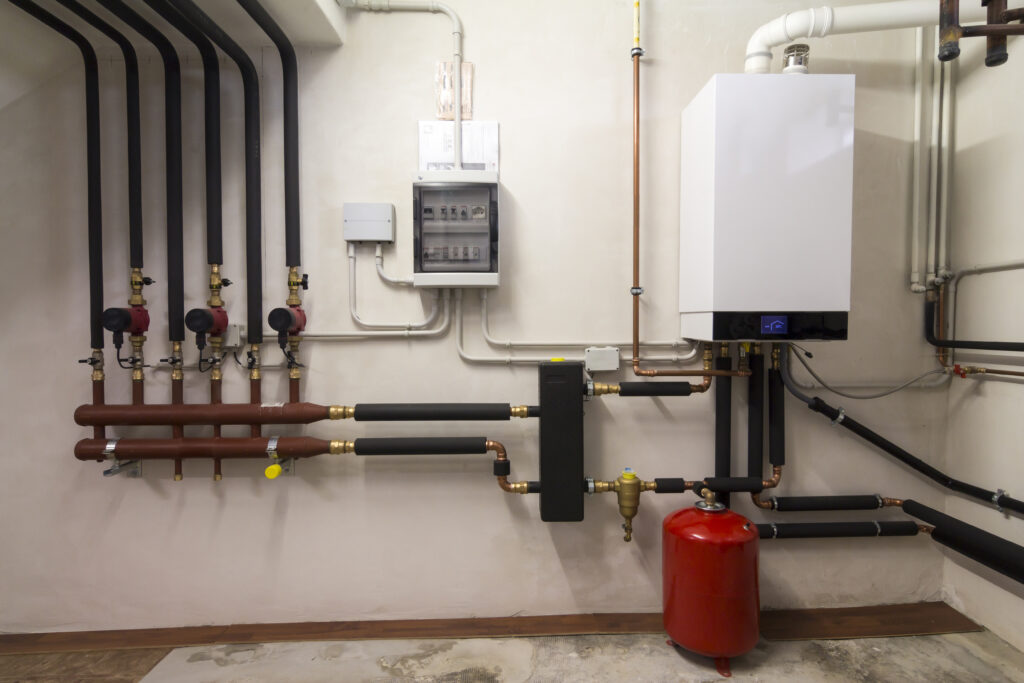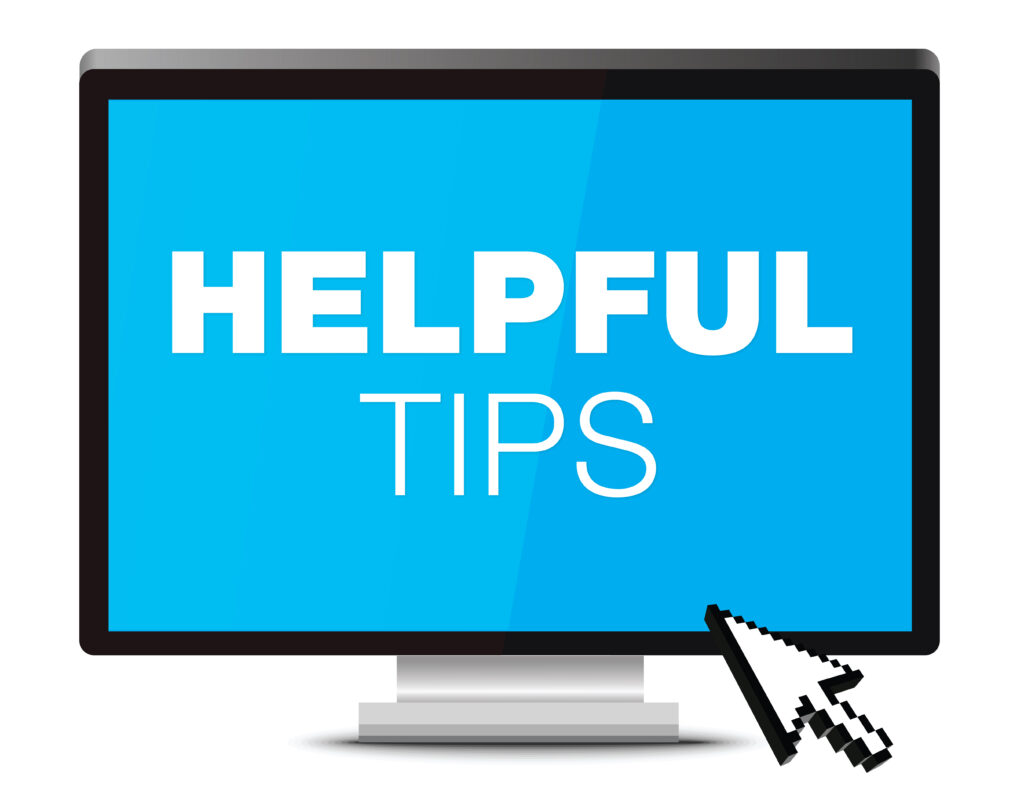Expansion Tanks for Water Heaters: A Homeowner’s Guide


Photo from iStock – Credit: imaginima
Have you ever wondered why your water heater needs an expansion tank?
If you’re a homeowner, understanding the intricacies of your water heating system is crucial, not only for the efficiency of your home but also for its safety.
Expansion tanks for water heaters might seem like small components, but their role is significant.
In this article, we delve deep into the world of expansion tanks for water heaters. You’ll learn what they are, why they’re essential, and how they contribute to the longevity and efficiency of your water heating system.
We’ll also guide you through choosing the right expansion tank, installing it, and maintaining it to ensure your home’s plumbing system runs smoothly.
A Detailed Explanation of Expansion Tanks for Water Heaters
Expansion tanks for water heaters are devices that absorb excess water pressure caused by thermal expansion in your water heating system.
When water is heated, it expands, and without a proper outlet for this increased volume, the pressure can cause significant damage to your plumbing system.

What are Expansion Tanks for Water Heaters?
Expansion tanks for water heaters are an essential component in your home’s plumbing system, particularly if you have a closed water system. This device plays a crucial role in maintaining the pressure balance within your water heater as the water heats and expands.
When water is heated, it increases in volume, and this expansion needs to be accommodated to prevent damage to your plumbing.
Without an expansion tank, the extra volume of water has nowhere to go, leading to increased pressure in the system. Over time, this pressure can cause strain on your water heater, pipes, and other components, potentially leading to leaks or even bursts.
The expansion tank is designed with a diaphragm or bladder that divides the tank into two sections. One side is connected to the plumbing system and fills with water, while the other side is filled with air or an inert gas, typically pre-charged at a specific pressure.
As the water heater operates and the water expands, the excess water flows into the tank, pressing against the diaphragm and compressing the air on the other side. This action absorbs the increased pressure, preventing it from stressing the plumbing system.
Choosing the right expansion tank for your water heater involves considering the size of your water heater and the pressure of your water supply.
The tank’s capacity needs to be sufficient to handle the volume of water your heater will expand when operating. If the tank is too small, it won’t effectively mitigate the pressure, while a too-large tank is unnecessarily expensive and takes up more space.
Regular maintenance of your expansion tank is also vital. This includes checking the air pressure in the tank and ensuring it matches the recommended settings, typically around 2 psi below the water pressure.
Additionally, inspecting the tank for signs of wear, such as corrosion or leaks, is crucial to ensure it continues to function effectively and protect your plumbing system.
An Expansion tanks for water heaters is a safety device that protects your home’s plumbing from the effects of thermal expansion. It ensures the longevity and efficiency of your water heating system, making it an indispensable part of your home’s plumbing infrastructure.
The Role of Expansion Tanks for Water Heaters
Protecting Your Plumbing System
The primary function of an expansion tank, or more specifically, an Expansion tanks for water heaters, is to safeguard your plumbing system from the dangers of excessive pressure.
This pressure typically results from the thermal expansion of water as it heats up within your water heater. Without a proper outlet for this expanded water, the pressure within your system could escalate, potentially leading to significant damage.
Acting as a Pressure Buffer
An expansion tank serves as a crucial pressure buffer.
It is essentially a reservoir designed to accommodate the extra volume of water that results from heating. By providing a designated space for this excess water, the expansion tank prevents the pressure from reaching dangerous levels.
This mechanism is vital for maintaining the integrity and longevity of your plumbing system, ensuring that pipes, joints, and fixtures are not subjected to stress beyond their designed capacity.
Ensuring System Efficiency
Beyond protecting your plumbing, an expansion tank on a water heater also contributes to the overall efficiency of your water heating system.
By managing pressure levels effectively, the tank helps maintain the system’s optimal performance. This not only extends the lifespan of your water heater but also ensures that your system operates efficiently, potentially saving you from costly repairs or replacements in the long run.
Key to Home Safety
The role of an expansion tank extends to ensuring the safety of your home.
Excessive pressure can lead to unexpected leaks or bursts, which, in turn, can cause water damage or even pose a risk to the inhabitants.
By integrating an expansion tank into your water heating system, you significantly reduce these risks, contributing to a safer living environment.
The expansion tank is an indispensable component of your water heating system. Its ability to mitigate excess pressure not only protects your plumbing infrastructure but also enhances the efficiency and safety of your home. Regular checks and maintenance of the expansion tank are essential to ensure it continues to perform its critical role effectively.
Understanding the Mechanics of Expansion Tanks for Water Heaters
The Diaphragm’s Role
At the heart of Expansion tanks for water heaters is a diaphragm, a flexible membrane that plays a crucial role in the tank’s operation. This diaphragm divides the tank into two separate chambers.
On one side, you have the water chamber, which is directly connected to your home’s plumbing system.
On the other side is the air chamber, which is pre-charged with air or an inert gas at a specific pressure.
Water Expansion and Pressure Absorption
As the water in your heater warms up, it expands. This is where the expansion tank on your water heater comes into play.
The expanding water flows into the tank’s water chamber, exerting pressure against the diaphragm. This pressure causes the diaphragm to flex, compressing the air in the opposite chamber.
By accommodating the expanded volume of water, the tank effectively absorbs the excess pressure, preventing it from stressing the plumbing system.
The Pre-set Pressure
The air side of the expansion tank is pre-charged with a specific pressure, typically set according to the water pressure in your home’s plumbing system. This pre-set pressure is crucial for the tank’s operation.
It ensures that the tank can start absorbing excess pressure immediately upon water expansion, maintaining the system’s overall pressure balance.
Continuous Pressure Management
The process of pressure absorption and release in an expansion tank is continuous and dynamic.
As water heats and cools in your system, the expansion tank constantly adjusts, flexing its diaphragm to accommodate changes in volume and pressure. This ongoing adjustment is key to the tank’s ability to protect your plumbing system effectively.
The expansion tanks for water heaters are sophisticated yet essential devices that ensure the stability and safety of your home’s plumbing system.
By understanding how it works, homeowners can appreciate the importance of this component and ensure it is maintained correctly, contributing to the overall health of their water heating system.
Also read: Revolutionize Your Plumbing: The Essential Expansion Tank Guide
Proper Installation of an Expansion Tank
The installation of an expansion tank is a critical step in ensuring the efficiency and longevity of your water heating system.
It’s typically mounted on the cold water supply line that feeds into the water heater, a strategic position that allows it to effectively manage the pressure caused by thermal expansion.
Choosing the Right Location
The ideal location for an expansion tank is on the cold water supply line, close to the water heater but not on the hot water outlet. This placement ensures that the tank can effectively absorb the increased pressure from the heated water.
It’s also important to install the tank in a way that it’s supported properly to prevent stress on the plumbing connections.
Professional Installation
While some homeowners may feel comfortable installing an expansion tank themselves, it’s often recommended to have it installed by a professional plumber.
Expansion tanks for water heaters professionals can ensure that the tank is properly sized for your water heater, correctly pressurized, and securely installed, which are all crucial factors for its effective operation.
Regular Maintenance Checks
To ensure that your expansion tank continues to function effectively, regular maintenance is essential. These checks can help identify any potential issues before they become serious problems, ensuring the longevity of your water heater and plumbing system.
Checking the Pressure
One of the key maintenance tasks is to check the air pressure in the expansion tank. This should be done annually using a standard tire pressure gauge.
The pressure should match the water pressure in your home’s plumbing system, which is typically around 50-60 psi, but this can vary depending on your specific system.
Inspecting for Leaks and Damage
During your regular maintenance checks, inspect the tank for any signs of leaks or damage. If the tank is waterlogged or has any visible damage, it may need to be replaced.
A waterlogged tank can no longer effectively absorb excess pressure, putting your plumbing system at risk.
Professional Inspection
In addition to your checks, having your expansion tank inspected by a professional plumber during your annual plumbing system check-up can provide peace of mind.
They can assess the tank’s condition, check the pressure, and make any necessary adjustments to ensure it’s operating correctly.
The proper installation and regular maintenance of an expansion tank are crucial for its effective operation and the overall health of your water heating system. By ensuring that your expansion tank is correctly installed and regularly maintained, you can protect your home from potential plumbing issues and extend the life of your water heater.
Recognizing the Need for Expansion Tanks for Water Heaters
Understanding the signs that indicate the need for an expansion tank can help you address potential issues in your plumbing system before they escalate.
Here are key indicators that suggest your water heater system might benefit from the installation of an expansion tank.
Fluctuating Water Pressure
One of the most noticeable signs that you might need an expansion tank is fluctuating water pressure throughout your home.
If you experience sudden changes in water pressure when using your faucets or shower, it could be a sign that your plumbing system is struggling to manage the pressure caused by thermal expansion.
Expansion tanks for water heaters help to stabilize this pressure, providing a more consistent water flow.
Frequent Leaks in the System
Regular occurrences of leaks, especially near the water heater or in your plumbing fixtures, can be a telltale sign of excessive pressure in your system.
This overpressure can strain pipes and fixtures, leading to leaks. Installing an expansion tank can alleviate this pressure, reducing the likelihood of leaks and the associated repair costs.
Constantly Running Pressure Relief Valve
The pressure relief valve on your water heater is designed to release water if the pressure or temperature gets too high, preventing the tank from exploding.
If this valve is frequently releasing water or seems to be in constant operation, it’s a strong indicator that your system is experiencing excessive pressure. An expansion tank can absorb this excess pressure and prevent the relief valve from triggering unnecessarily.
Addressing the Issue
If you’ve noticed any of these signs, it’s crucial to take action to prevent further damage to your plumbing system.
Consultation with Expansion Tanks for Water Heaters professionals
If you’re unsure whether you need an expansion tank, consulting with expansion tanks for water heaters professionals can provide clarity.
They can assess your system’s needs based on the symptoms you’re experiencing and recommend the best course of action.
Installation Benefits
Installing expansion tanks for water heaters not only addresses the immediate symptoms of pressure fluctuations, leaks, and an overactive pressure relief valve but also contributes to the long-term health of your plumbing system.
It can prevent future issues, extend the lifespan of your water heater, and provide peace of mind knowing that your system is better equipped to handle thermal expansion.
Recognizing the signs that indicate the need for an expansion tank is crucial for maintaining a healthy plumbing system. By addressing these signs promptly and considering the installation of an expansion tank, you can enhance the efficiency, safety, and longevity of your water heating system.
How to Select the Ideal Expansion Tanks for Water Heaters
Understanding Capacity Requirements
Choosing the right expansion tank for your water heater is not a one-size-fits-all scenario. The key factor in this decision is the capacity of your water heater.
The volume of water your heater can hold directly influences the size of the expansion tank you need. A tank that’s too small won’t adequately handle the pressure fluctuations, while an oversized tank takes up unnecessary space and may not operate as efficiently.
Assessing Your Plumbing System’s Pressure
Another critical aspect to consider is the pressure of your plumbing system.
The expansion tank’s capacity to absorb excess pressure should align with your system’s specific pressure settings. This alignment ensures that the tank can effectively mitigate pressure spikes without being overwhelmed or underutilized.
Consulting with a Professional
Given the technical nature of choosing an expansion tank, consulting with a professional plumber is highly recommended.
A plumber can assess your system’s specifications and recommend an expansion tank that fits your needs.
They can also ensure that the tank is compatible with the specific requirements of expansion tanks for water heaters, considering factors like the tank’s pre-charge pressure and its physical connection to your plumbing system.
Types of Expansion Tanks
There are various types of expansion tanks available, each designed to suit different systems and preferences. Some tanks are designed specifically for residential use, while others are intended for commercial applications.
The material of the tank, whether steel or composite, can also influence your choice, affecting the tank’s durability and maintenance requirements.
Selecting the right expansion tank is a critical step in ensuring the efficiency and longevity of your water heating system.
By considering your water heater’s capacity, your plumbing system’s pressure, and seeking professional advice, you can choose an expansion tank that provides optimal performance and protection for your home.
DIY vs. Professional Installation of Expansion Tanks
When it comes to installing Expansion tanks for water heaters, homeowners often face the choice between a DIY approach and hiring a professional.
Understanding the nuances of both options can help you make an informed decision that aligns with your skills, budget, and the specific needs of your plumbing system.
DIY Installation
Pros:
- Cost Savings: Handling the installation yourself can save on labor costs, making it an attractive option for those who are handy and familiar with basic plumbing tasks.
- Flexibility: DIY installation allows you to work on your schedule, without the need to coordinate with a professional’s availability.
- Learning Experience: Taking on the installation as a DIY project can provide valuable learning experiences, enhancing your understanding of your home’s plumbing system.
Cons:
- Risk of Errors: Without the expertise of a professional, there’s a higher risk of incorrect installation, which can lead to system inefficiencies or damage.
- Lack of Warranty: Some manufacturers may require professional installation for the warranty to be valid, so a DIY approach might void this protection.
- Safety Concerns: Incorrect installation can pose safety risks, especially if the expansion tank is not properly secured or if there are issues with pressure settings.
Professional Installation
Pros:
- Expertise: Professionals bring experience and knowledge, ensuring that the expansion tank is installed correctly and efficiently.
- Warranty and Compliance: Hiring a professional often ensures that the work is covered by a warranty and complies with local codes and regulations.
- Time-Saving: A professional can complete the installation quickly and effectively, saving you time and the hassle of figuring out the process yourself.
Cons:
- Cost: The primary drawback of professional installation is the cost, as you will need to pay for the expertise and labor of the plumber.
- Scheduling: You’ll need to schedule an appointment, which might not always align with your immediate availability or preference.
The choice between DIY and professional installation of Expansion tanks for water heaters depends on various factors, including your comfort level with plumbing tasks, budget constraints, and the importance of warranty and compliance.
While DIY can be cost-effective and rewarding, the expertise and peace of mind offered by professional installation are often worth the investment, especially for those who prioritize reliability and efficiency in their home’s plumbing system.
Essential Installation Tips for Expansion Tanks
Proper installation of expansion tanks for water heaters is crucial for the optimal performance of an expansion tank.
Here’s a detailed guide to ensure your expansion tanks for water heaters are installed correctly and function as intended:
Adherence to Manufacturer Instructions
Guideline Compliance
Each expansion tank is unique, and manufacturers provide specific instructions tailored to each model. Following these guidelines is crucial for ensuring the tank functions correctly and efficiently.
Installation Steps
The instructions will detail the necessary steps for installation, including where to place the tank to the water heater and how to secure it properly. These steps are designed to optimize the tank’s performance and longevity.
Pre-charge Pressure Check
Pressure Alignment
Before installing the expansion tanks for water heaters, it’s essential to check and adjust the pre-charge pressure to align with your home’s water pressure. This ensures that the tank can effectively absorb excess pressure without being overtaxed or underutilized.
Adjustment Process
Using a standard air pump, similar to those used for bicycle tires or sports balls, you can adjust the tank’s pressure. This adjustment is crucial for the tank to function correctly and should match the water pressure to ensure balance within the system.
Ensuring Proper Support
Weight Considerations
Expansion tanks for water heaters can become quite heavy when filled with water, especially larger models designed for extensive systems. Proper support is essential to prevent undue stress on the tank and the connected plumbing.
Mounting and Bracing
Secure mounting brackets or a platform can provide the necessary support for the tank. Ensuring that the tank is firmly and securely installed will prevent movement and potential damage to the plumbing connections.
Additional Considerations
Accessibility
Install the tank in a location where it can be easily accessed for maintenance and inspection. This accessibility will facilitate regular checks and adjustments, contributing to the system’s overall health and efficiency.
Professional Assistance
If you’re unsure about any aspect of the installation process, consider hiring a professional plumber.
Their expertise can ensure that the expansion tank is installed correctly, providing peace of mind and ensuring the system’s reliability.
By following these detailed installation tips, you can ensure that your expansion tank is set up correctly, enhancing the efficiency and longevity of your water heating system.
Proper installation is a critical step in safeguarding your home’s plumbing infrastructure and ensuring consistent, reliable performance from your water heater.
Enhancing Your Home’s Water Heating System with an Expansion Tank
Incorporating Expansion tanks for water heaters into your home’s plumbing system is not just about adhering to building codes or following manufacturer recommendations; it’s about taking a proactive step toward ensuring the efficiency, safety, and longevity of your water heating system.
Let’s delve into how an expansion tank enhances your system, the environmental benefits, and the importance of understanding system compatibility.
System Enhancement with an Expansion Tank
Optimized Performance:
An Expansion tanks for water heaters plays a pivotal role in maintaining the system’s pressure at optimal levels.
By doing so, it ensures that the water heater operates efficiently, reducing the energy required to maintain water temperatures and thereby enhancing the system’s overall performance.
Preventive Maintenance
The presence of an expansion tank helps in identifying potential issues in the water heating system before they escalate.
Regular checks on the expansion tank can reveal signs of system pressure fluctuations, prompting early intervention and preventing more significant problems down the line.
Long-Term Cost Savings:
While the initial investment in an expansion tank and its installation might seem like an added expense, the long-term savings are substantial.
By mitigating the risks of pressure-related damages, the expansion tanks for water heaters reduce the need for frequent repairs or premature replacement of the water heater, offering significant cost savings over time.
Environmental Benefits
Energy Efficiency
By ensuring that the water heating system operates within the ideal pressure range, an expansion tank contributes to the system’s energy efficiency. A more efficient system requires less energy to heat water, which translates to lower energy consumption and a reduced carbon footprint.
Resource Conservation
By extending the lifespan of the water heater and reducing the likelihood of leaks or bursts that can result in water wastage, an expansion tank indirectly contributes to water and resource conservation, aligning with environmentally friendly practices.

Photo from iStock – Credit: matteogirelli
Understanding System Compatibility
Compatibility with Various Systems
Whether you have a traditional tank-based water heater or a modern tankless system, it’s crucial to ensure that the expansion tank is compatible with your specific setup.
This compatibility ensures that the expansion tanks for water heaters function as intended, providing the necessary pressure relief and contributing to the system’s efficiency.
Expert Guidance:
Consulting with a plumbing professional can provide insights into the most suitable expansion tank for your water heater, considering factors like system type, capacity, and local water pressure. This expert guidance ensures that you choose an expansion tank that complements your system, enhancing its performance and longevity.
Incorporating Expansion tanks for water heaters is a wise decision for any homeowner looking to optimize their water heating system’s performance, ensure its longevity, and contribute to environmental conservation.
By understanding the benefits and ensuring system compatibility, you can make an informed choice that enhances your home’s plumbing infrastructure and offers peace of mind.
Strategic Considerations for Expansion Tank Integration
When integrating an Expansion tanks for water heaters into your home’s plumbing system, strategic considerations are crucial to maximize its benefits.
This section explores the strategic placement, the role of expansion tanks in energy conservation, and their impact on system diagnostics.
Strategic Placement for Optimal Functionality
Location Efficiency:
The placement of Expansion tanks for water heaters is pivotal for its functionality. Ideally, it should be installed on the cold water supply line near the water heater to effectively manage the pressure caused by thermal expansion.
Strategic placement ensures that the tank can perform its pressure-regulating functions efficiently, contributing to the system’s overall health.
Accessibility for Maintenance:
Beyond just installation, the location of expansion tanks for water heaters should consider ease of access for regular maintenance. Ensuring that the tank is easily reachable facilitates routine inspections and adjustments, which are essential for the long-term efficacy of the tank and the system it supports.
Expansion Tanks and Energy Conservation
Mitigating Energy Loss
An often-overlooked benefit of an expansion tank is its role in energy conservation. By maintaining a consistent pressure level within the water heating system, the tank helps in preventing energy loss.
A system without pressure fluctuations doesn’t have to work as hard to maintain water temperature, leading to reduced energy consumption.
Sustainability Aspect
The energy conservation facilitated by an expansion tank aligns with sustainable living practices. By reducing the energy demand of your water heating system, you’re contributing to a lower carbon footprint, making an expansion tank an eco-friendly addition to your home.
Impact on System Diagnostics
Early Warning System:
An Expansion tanks for water heaters can serve as an early warning system for potential issues in your plumbing.
Unusual behaviors or changes in the tank’s performance can indicate underlying problems in the water heating system, allowing for early detection and intervention.
Facilitating System Analysis:
By monitoring the pressure levels and the functional state of the expansion tank, homeowners and professionals can gain insights into the overall health of the water heating system. This makes the expansion tank a valuable tool in system diagnostics, aiding in the timely identification and resolution of issues.
Incorporating an expansion tank into your water heating system is a strategic decision that extends beyond mere compliance with regulations. It’s about enhancing the system’s efficiency, contributing to energy conservation, and leveraging the tank’s diagnostic potential to maintain a robust plumbing infrastructure.
By understanding these strategic considerations, homeowners can ensure that their Expansion tanks for water heaters serve as a vital component in the optimal operation and sustainability of their water heating system.

Photo from iStock – Credit: chokkicx
Essential Tips and Strategies for Expansion Tank Efficiency
Proper Sizing and Selection
Selecting the appropriate size and type of Expansion tanks for water heaters is not just a recommendation; it’s a necessity for the system’s functionality.
The capacity of the expansion tank must be in sync with your water heater’s volume and the dynamics of your plumbing system.
An undersized or oversized expansion tank can lead to inefficiencies or system failures, emphasizing the importance of accurate sizing. Consulting with professionals or utilizing sizing calculators can guide you in making the right choice, ensuring your expansion tank serves its purpose effectively.
Professional Installation
The installation of an expansion tank is a task that demands precision and expertise. Professional installation ensures that the expansion tank is correctly integrated with your water heating system, adhering to all necessary codes and standards.
Expansion tanks for water heaters professionals understand the nuances of placement, connection, and pressure settings, which are crucial for the tank’s operation.
By opting for expert installation, you safeguard the system’s efficiency, prevent potential issues, and ensure compliance with local regulations, contributing to the system’s longevity and reliability.
Regular Maintenance
The longevity and effectiveness of expansion tanks for water heaters hinge on consistent maintenance. Regular checks for pressure accuracy, leak inspections, and diaphragm integrity are vital to ensure the tank’s operational efficacy.
Neglecting maintenance can lead to unnoticed issues, resulting in system inefficiencies or failures. Establishing a routine maintenance schedule can help detect and address problems early, maintaining the expansion tank’s performance and extending its service life.
Understanding Its Function
A deep understanding of how an expansion tank functions can be incredibly beneficial for homeowners. This knowledge allows you to recognize signs of malfunction, understand maintenance needs, and appreciate the tank’s role within your water heating system.
Awareness of the expansion tank’s operation helps in identifying issues promptly, facilitating timely interventions that can prevent more significant problems and ensure the system’s optimal performance.
Energy Efficiency
While the primary role of an expansion tank is to manage pressure, its efficiency impacts the overall energy consumption of the water heating system.
An efficiently functioning expansion tank supports the water heater’s operation, contributing to energy conservation. Ensuring that your expansion tank is in top condition, therefore, not only protects your plumbing but also promotes energy efficiency, which can lead to cost savings and a reduced environmental footprint.
The effectiveness of Expansion tanks for water heaters is pivotal for the system’s health and efficiency.
By focusing on proper sizing, professional installation, regular maintenance, understanding its function, and considering its impact on energy efficiency, you can ensure that your expansion tank significantly contributes to the optimal performance of your water heating system.
Expert Assistance with Expansion Tanks: Benjamin Franklin Plumbing of Mohave County, AZ
Your Local Plumbing Experts
When it comes to ensuring the efficiency and longevity of your water heating system, particularly the Expansion tanks for water heaters, the expertise of a seasoned plumber is invaluable.
Benjamin Franklin Plumbing in Mohave County, AZ, stands out as a trusted local resource for all your plumbing needs. With a deep understanding of water heaters and expansion tanks, their team is equipped to provide top-notch service, whether it’s installation, maintenance, or repair.
Comprehensive Services in Mohave County
Serving a broad area, including Kingman, Bullhead City, Golden Valley, and Mohave Valley, AZ, Benjamin Franklin Plumbing offers comprehensive plumbing services that cater to the unique needs of each community.
Whether you’re in the bustling streets of Kingman or the serene landscapes of Mohave Valley, their experts are just a call away, ready to assist with your expansion tank requirements.
Why Choose Benjamin Franklin Plumbing?
Expertise: With a team of skilled professionals, Benjamin Franklin Plumbing brings a wealth of knowledge and experience to every job, ensuring your expansion tanks for water heaters are handled with precision.
Local Understanding:
Familiarity with the local area and its specific plumbing challenges allows Benjamin Franklin Plumbing to provide tailored solutions that meet the unique needs of residents in Mohave County.
Customer Satisfaction:
Committed to excellence, they prioritize customer satisfaction, offering reliable and efficient services that have earned them a stellar reputation in the community.
Accessibility:
Easy to reach and responsive, their customer service ensures that your plumbing issues are addressed promptly, minimizing any inconvenience.
Benjamin Franklin Plumbing of Mohave: Your Go-to Expansion Tanks for Water Heaters Experts
For residents of Kingman, Bullhead City, Golden Valley, and Mohave Valley, AZ, Benjamin Franklin Plumbing is your go-to source for expert assistance with expansion tanks for water heaters.
Don’t hesitate to reach out for professional advice, installation, or maintenance services. Check their reviews and ratings here and experience the peace of mind that comes with exceptional plumbing support.
Call # 928-224-8669 today to schedule your service with Benjamin Franklin Plumbing of Mohave County, AZ, and ensure your water heating system, including the expansion tank, operates efficiently and reliably.
Conclusion
Understanding and maintaining the expansion tank for your water heater is crucial for the longevity and efficiency of your home’s water heating system.
Whether you’re in Kingman, Bullhead City, Golden Valley, or Mohave Valley, AZ, having a reliable service provider like Benjamin Franklin Plumbing of Mohave County can make all the difference in ensuring your system operates smoothly.
Their expansion tanks for water heaters expertise in handling expansion tanks on water heaters ensures that your home is safeguarded against potential pressure-related issues, providing peace of mind and enhancing the overall performance of your water heating system.
Regular maintenance, including proper sizing, installation, and routine checks, is essential to prevent unexpected failures and extend the lifespan of your water heater and expansion tank.
By staying informed about how your expansion tank works and recognizing the signs of potential issues, you can take proactive steps to address any concerns, ensuring your system remains efficient and effective.
Remember, the key to a reliable water heating system lies in understanding its components, like the expansion tank, and entrusting its care to seasoned professionals.
With Benjamin Franklin Plumbing of Mohave County, AZ, you have a partner ready to assist with all your plumbing needs, ensuring your water heater and expansion tank are in optimal condition.

Photo from iStock – Credit porcorex
FAQS
-
Why is an expansion tank necessary for a water heater?
Without an expansion tank, the extra pressure caused by the expansion of heated water could lead to leaks or even burst pipes in your plumbing system.
The tank helps to absorb this excess pressure, protecting your home from potential water damage and ensuring the longevity of your water heating system.
-
How do I know if my water heater needs an expansion tank?
If you have a closed plumbing system, which is common in modern homes, an expansion tank is necessary.
This system includes a one-way valve, such as a pressure-reducing valve or backflow preventer, which doesn’t allow water to flow back into the main water supply, necessitating an expansion tank to handle the increased pressure.
-
How do I choose the right size expansion tank for my water heater?
The size of the expansion tank you need depends on the size of your water heater and the pressure of your water supply.
It’s essential to consult with a professional plumber to determine the appropriate size for your system to ensure it functions correctly and efficiently.
-
How is an expansion tank installed?
An expansion tank is typically installed on the cold water supply line near the water heater.
It must be securely mounted and connected to the plumbing system following specific guidelines to ensure it operates effectively and safely.
What other questions do you have about expansion tanks for water heaters? Share your thoughts and inquiries below!

















